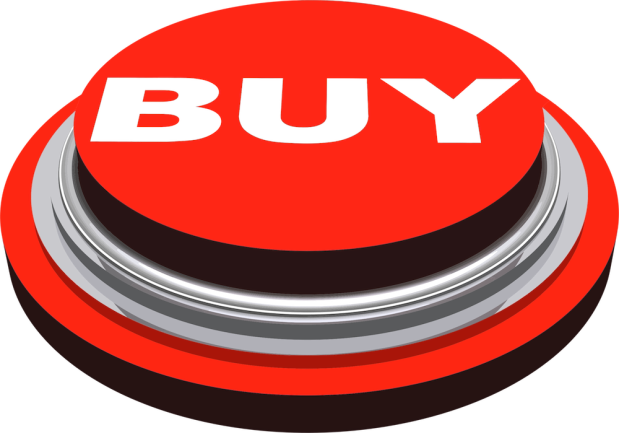The Big Buy Button Story: Winners, Losers And What’s Next

When Amazon first rolled out its 1-click buy button in 1995, it was more than a convenience, it was a sea change — a way to easily make a payment on this thing called the web.
These days, most of the research shows that consumers don’t just like buy buttons or mildly prefer them — in fact, the fastest way to scare off a conversion in an online transaction is to force customers to key in a 16-digit card number instead of just clicking “buy now” in some form or another.
But the buy button is better loved than it is understood — which is why the PYMNTS team and Abine collaborated to create the Ready. Set. Buy (Buttons) Insider Report to get an up-close snapshot by examining the websites of the top thousand or so online retailers.
So what did we learn — and what does it mean?
To get the inside scoop, Karen Webster and Abine co-founder and CEO Rob Shavell chatted it up about which firms are ahead, behind and what to look for next as the buy button war for dominance spins up another few levels in 2017.
Ta Da: The Winners: PayPal And Amazon
There is something to be said for starting the race early — and so it probably comes as no surprise that PayPal and Amazon are the resident buy button champions among the top internet retailers. But just how dominant Amazon and PayPal are might well be surprising when one gets down to the numbers.
“The traction that Amazon Pay has statistically in that top set of merchants online is — I think — very surprising for anyone outside of Amazon. I think if you just told people that Amazon has two and three times more presence online than Visa Checkout and Masterpass combined — most people would have said ‘no way,’” Webster and Shavell observed.
And the numbers are fairly staggering – PayPal has 68 percent of the top 100, Amazon has over 10 percent. Visa has 4.1 percent of merchants accepting Visa Checkout, while 2.8 percent accepted Masterpass, and less than 1 percent accepted American Express Checkout and Chase Pay.
More interesting, Shavell notes, is how the merchants and brands break down. PayPal has 68 percent of the top merchants online — which makes sense, given that they have been at it the longest. However, when you really dial in on those merchants, the data indicates that PayPal and Amazon have really strongly gone after “the longer tails and smaller merchants” as defined by sales volumes — whereas Visa and Mastercard have both much more heavily favored a top-down approach.
“It look like Visa in particular — and also Mastercard — has taken a very ‘Apparel, Electronics and Sporting Goods’ focus at the top end,” Shavell observed. “And that makes sense, especially when you look at their ad spend around television and sporting events — they obviously want to to pull through as many consumers as possible to set up accounts.”
Amazon and PayPal, he notes, with their dedicated online DNA and focus, are playing a numbers game — and selling to those smaller merchants leads to the reality of a big uptick in conversions.
“People see that button and they know what the experience they are getting with Amazon — and PayPal,” Webster observed. “And that matters as consumers are building digital habits.”
Building A Better Habit Set
When customers walk into a physical store today, Shavell and Webster chatted, there is the standard logo display that tells them all the many payments methods the merchant takes.
And, with the proliferation of digital wallets and buy buttons possibilities out there, one might almost expect a similar icon menu for digital payment.
But, in reality, the data shows that in many cases, even on some of the most popular sites on the web — that just isn’t what’s on tap. Only 14 percent of the top 1000 sites on the web even accept more than one button.
“What will be interesting to watch is whether mobile wallet icons become the new acceptance marks — in other words, what consumers look for when they checkout online,” Webster observed, suggesting that if you’re not there, well, then, you’ll miss out.
And that, Shavell suggests, is what he thinks has held up a lot of the action in digital payments — buyers know PayPal and have had over 20 years to build a habit around it. Consumers aren’t building similar digital habits around other methods — largely because they aren’t being reminded that there are other options.
But, he notes, the data is clear, and the push is coming.
“If we just look at the numbers, it seems clear that card networks are working hard to make up for lost time – they admittedly didn’t begin to focus on the importance of digital payments until a few years ago,” Shavell noted.
Want to get the whole scoop? Good news, we have the full report here.
